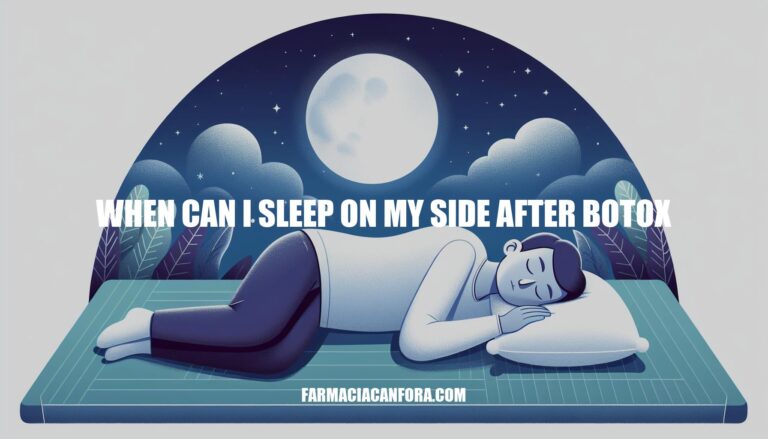


Understanding when you can sleep on your side after Botox is crucial for ensuring the best results from your treatment. Proper post-treatment care, including the right sleeping positions, helps prevent the Botox from migrating to unintended areas, which can affect the final outcome. By following these guidelines, you can maximize the effectiveness of your Botox treatment and enjoy smoother, more youthful-looking skin.
The first few hours after Botox treatment are crucial for ensuring the best results. During this time, it’s essential to keep your head upright and avoid lying down. This helps prevent the Botox from migrating to unintended areas, which could lead to unwanted effects like muscle relaxation in the wrong places.
Staying upright also ensures that the Botox diffuses correctly into the targeted muscles, allowing it to work effectively. So, for at least 4 to 6 hours post-treatment, keep your head up and avoid activities that might increase blood flow to your face. This simple step can make a big difference in the outcome of your treatment.
Here are the precautions to take on the first night after Botox:
Sleeping on Your Side: Sleeping on your side can cause the Botox to spread to adjacent muscles, leading to uneven results or affecting muscles that weren’t intended to be treated. It can also increase swelling or bruising in the treated areas, prolonging your recovery time.
First 24-48 Hours Post-Botox Treatment:
Sleeping on Your Side:
Factors Influencing Timeline:
Here are some tips to help you gradually return to sleeping on your side after Botox:
Wait at least 24-48 hours: Avoid sleeping on your side for the first 24-48 hours after your Botox treatment to allow the neurotoxin to settle properly.
Use supportive pillows:
Maintain proper posture:
Clean bedding: Ensure your pillows and bedding are clean to avoid any irritation or infection at the injection sites.
Gradual transition: Start by sleeping on your back and gradually spend short periods on your side, increasing the duration as you feel comfortable and notice no adverse effects.
Following these tips can help you return to your preferred sleeping position while ensuring the best results from your Botox treatment. If you have any concerns, always consult your healthcare provider for personalized advice.
After Botox treatment, it’s recommended to avoid sleeping on your side for at least 24-48 hours to allow the neurotoxin to settle properly.
During this time, stay upright, avoid touching the treated areas, and refrain from strenuous activities. Sleeping on your back with your head slightly elevated can help minimize pressure on the treated areas.
Once you’ve waited 24-48 hours, you can gradually return to sleeping on your side by using supportive pillows and maintaining proper posture.
It’s essential to follow post-treatment guidelines for optimal outcomes, as sleeping on your side too soon can cause the Botox to spread to adjacent muscles or increase swelling and bruising in the treated areas.